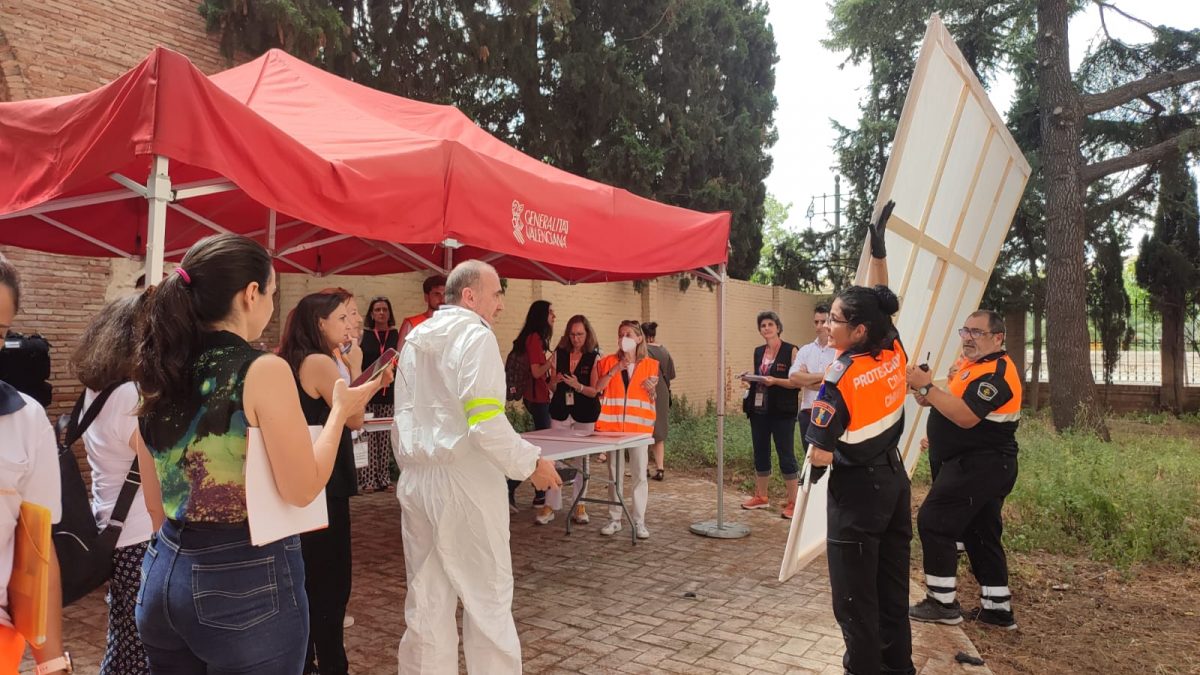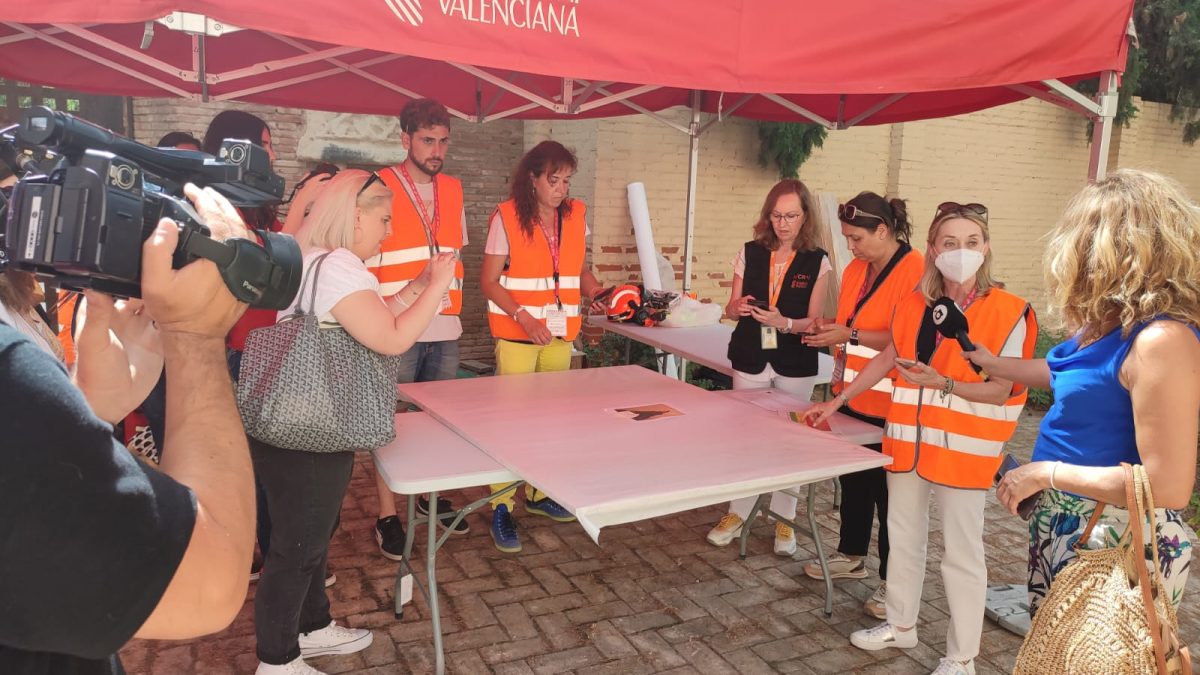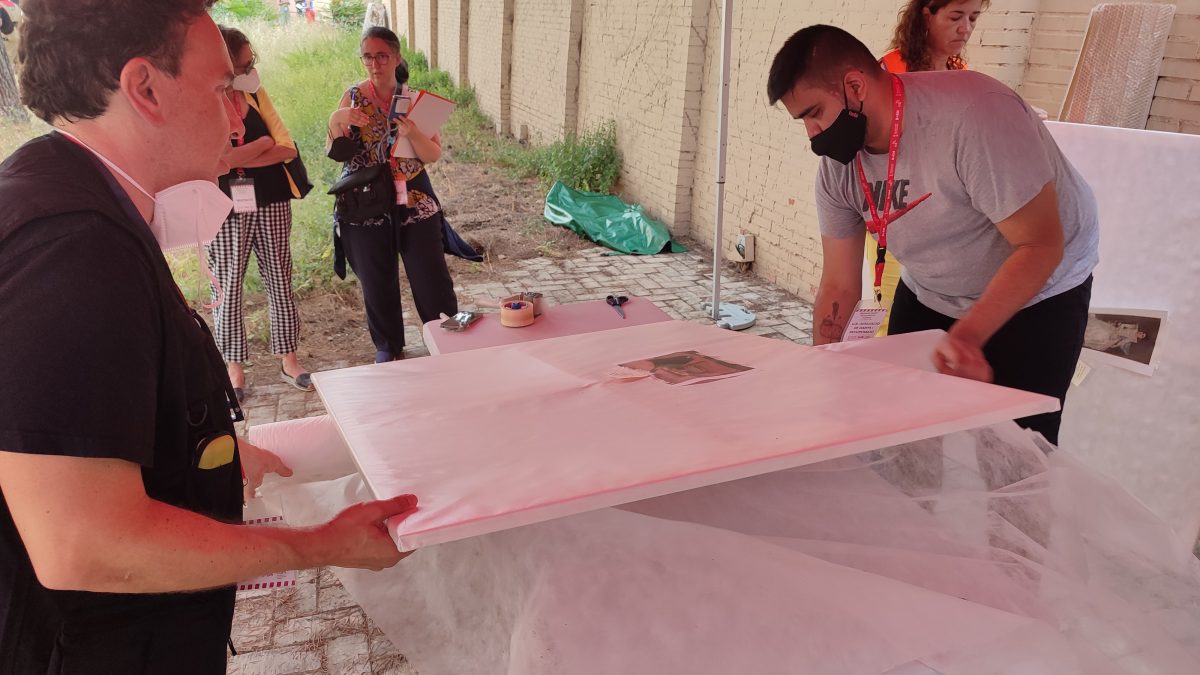El pasado martes 5 de julio la Cátedra Unesco Forum Universidad y Patrimonio Cultural (UPV) acudió al simulacro de incendio realizado en el Museo de Bellas Artes de Valencia. Esta institución custodia cerca de 30.000 obras entre las que se encuentran firmas como las de Sorolla, Joan de Joanes o Velázquez.
La identidad que otorga el patrimonio valenciano se puso a prueba bajo la dirección de la Agencia Valenciana de Seguridad y Respuesta a las Emergencias (AVSRE) y la Dirección General de Cultura y Patrimonio, quienes coordinaron a un centenar de efectivos pertenecientes al Servicio de Bomberos del Ayuntamiento de Valencia, Policía Local, Unidad de Patrimonio de la Generalitat y Conselleria de Sanitat.

Sobre las 11:02 h sonaba la alarma acústica que alertaba del inicio del simulacro y todos los cuerpos se pusieron en marcha para llevar a cabo, en primer lugar, la evacuación de las personas que se encontraban en las salas, el control del incendio y el posterior traslado de las obras de arte simuladas.
Este procedimiento basado en la formación en casos de emergencia ha sido financiado por el Ministerio de Economía y Competitividad, cuyo objetivo es la amplitud de miras en cuanto a estrategias de respuesta a emergencias en escenarios como el museístico. El cuerpo de técnicos del Institut Valencià de Conservació, Restauració i investigació (IVCR +i) estableció una jeararquía de trabajo que permitió optimizar todas las acciones. En ella se pudo observar la división de actividades en tres grandes grupos técnicos: manipulación, triaje y embalaje.



· Grupo técnico (GT) de manipulación: encargado de la evacuación de las obras del museo. En esta fase se ha podido observar al equipo protegido con la indumentaria necesaria para este tipo de acontecimientos -mono ignífugo completo, brazalete reflectante y el correspondiente logo de la institución acompañado de mascarillas específicas-
· Grupo Técnico (GT) de triaje: una vez situadas las obras sobre las mesas bajo unas carpas montadas de forma improvisada por Protección Civil, los técnicos establecieron un análisis del estado de conservación, identificando así, las patologías y realizando una división entre obras que se encontraban húmedas y secas.
· Grupo Técnico (GT) de embalaje: en este punto, las obras eran embaladas con material tisú y trasladadas tanto al vehículo de transporte, aquellas que necesitaban una intervención urgente, como al almacén del museo las que no presentaban deterioros.

Todos estos procedimientos fueron monitorizados desde un punto de control construido de manera instantánea por los Bomberos tras su llegada. En ellos se encontraban representantes de todos los cuerpos participantes y miembros, a su vez, del equipo Mission Track Ingeniería y Sistemas S.L, quien ha desarrollado una aplicación (Mission Track) que permite controlar el estado y la evolución de los procedimientos de las obras de arte en tiempo real. En el simulacro acudieron en su representación Víctor Bañuls (director científico) y Eduardo del Palacio (ingeniero de Software).
Además, se contó con la presencia, tanto de invitados como de observadores, quienes ofrecieron un informe final de mejoras de la actuación, entre ellos los representantes del Instituto Andaluz del Patrimonio Histórico (IAPH).
Cabe destacar, por último, la labor y la predisposición de los 15 voluntarios de Protección Civil de varios municipios de Valencia, quienes fueron previamente instruidos en la manipulación y transporte adecuados de las obras de arte.
En definitiva, un acontecimiento histórico en formato de prueba que nos permite estar alerta y preparados en caso de una catástrofe inminente, como puede ser el incendio. Toda la identidad que otorga el arte valenciano y el que encierra el Museo de Bellas Artes se vio altamente protegida gracias a la cooperación de todos los cuerpos técnicos y de seguridad. Conocer el valor de lo que tenemos es la estrategia de emergencia clave para la protección de nuestro patrimonio.
––
AN HISTORICAL EVENT IN TEST FORMAT: FIRE DRILL AT THE VALENCIAN FINE ARTS MUSEUM (GVA)
Last Tuesday, July 5th Cátedra Unesco Forum Universidad y Patrimonio attended the fire drill held at Valencian Fine Arts Museum. This institution holds nearly 30,000 works of art, including works by Sorolla, Joan de Joanes and Velázquez.
The identity offered by the Valencian heritage was tested under the direction of the Agencia Valenciana de Seguridad y Respuesta a las Emergencias (AVSRE) and the Dirección General de Cultura y Patrimonio, who coordinated a hundred troops belonging to the Servicio de Bomberos del Ayuntamiento, Policía Local, Unidad de Patrimonio de la Generalitat and Conselleria de Sanitat.
Around 11:02 a.m., the acoustic alarm sounded alerting the beginning of the drill and all teams were mobilized to carry out, first, the evacuation of the people who were in the rooms, the control of the fire and the subsequent transfer of the simulated works of art.
This procedure based on emergency training has been funded by the Ministerio de Economía y Competitividad, whose objective is to generate a wide vision in terms of emergency response strategies in scenarios such as the museum.
The technical staff of the Institut Valencià de Conservació, Restauració i investigació (IVCR+i) established a working hierarchy that made possible to optimize all actions. It was possible to observe the division of work into three large groups:
· Technical Group (TG) of manipulation: in charge of the evacuation of the museum's works. The entire team wore full Tyvek® coveralls with a reflective armband and the corresponding logo of the institution.
· Triage Technical Group (TG): once the works had been placed on the tables that Protección Civil had set up under improvised tents, the technicians analyzed the state of conservation, identifying pathologies and establishing a division between works wet and dry.
· Technical Packing Group (TG): at this point, the works that needed urgent intervention were packed up with tissue and transferred to the transport vehicle wether those that did not show any deterioration were packed up with tissue and delivered to museum's warehouse.
All these procedures were monitored from a control point set up instantly by the firefighters after their arrival and were attended by representatives of all the participating forces and members of the Mission Track Ingenieria y Sistemas S.L. team, which has developed an app (Mission Track) that allows the status and evolution of the procedures of the art works to be monitored in real time. Víctor Bañuls (scientific director) and Eduardo del Palacio (software engineer) attended the simulation on their behalf.
In addition, both guests and observers were present who gave a final report on the improvements of the performance. Among them were, for example, representatives of the Instituto Andaluz de Patrimonio Histórico (IAPH).
Finally, it is worth mentioning the work and predisposition of the 15 Civil Protection volunteers from different municipalities in Valencia, who were previously instructed in the proper handling and transport of art works.
To sum up, an historic event in test format which allows us to be alert and prepared in case of an imminent catastrophe, such as fire. All the identity that gives valencian art was highly protected thanks to the cooperation of all the technical and security forces. Knowing the value of what we have is the key emergency strategy for the protection of our cultural heritage.
––

